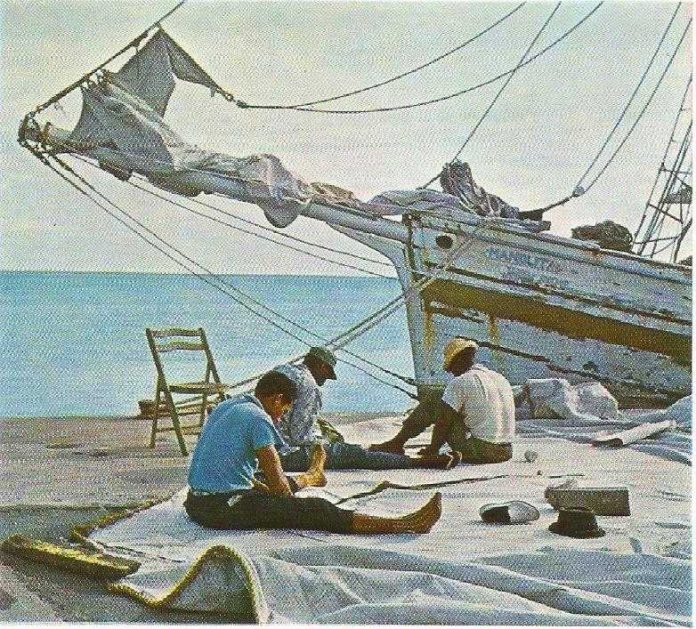Article by Etnia Nativa call us 592 2702 and book your experience!
One of the activities that man developed thousands of years ago among many in the gathering of subsistence was fishing. Lakes, river and the vast oceans offered abundance live supporting resources. When man reached these South West Caribbean islands it wasn’t any different. Aruba being the closest to the main land and its hills gave a 360 degree view all over the sea and a sense of security. Since the time of the Paleo Amerindian islander depended greatly on the fruits which the sea provided. Since the Stone Age, men caught fish, both in inland waters and in the sea. They caught fish using their hands, made sea traps, spears, arrows and harpoons to aid the activity.
The Arubans, just like other many Windward Islanders engaged during the late colonial era till mid last century, mainly in coastal fishing. Using rowing-boats or small sailing-boats, later provided with combustion motors. Dragnets and canisters in shallow water technics where also applied. Fishermen carried on their trade around the Monges Islands and off the opposite coast. Here they employing big fishing schooners from 5 to 40 gross registered tons burthen with Venezuelan crews. The coastal fishermen supply fresh fish, but the catches of the bigger cutters, though brought to Aruban markets in greater quantity, the catch was less fresh, since it remained in cold storage for some time. At a rough estimate there where about a hundred professional small fishing boats.
Cruising off the coast the Aruban fisherman patiently waited for a fish willing to snap at the bait on the drag-line, in nets and traps. Veritable giants are sometimes caught. Barracudas weigh from 9 to 44 pounds and measure from 3 to almost 7 feet. The king-fish has a weight from 22 to 44 pounds; the grouper may tip the scales at 155, whilst garfish, having a length of nine feet, weigh over 132 pounds.
When fishing with deep-sea lines just over the bottom of the sea the boat is kept in place by means of a piece of rock serving as an anchor. The two most important species of fish by far caught in this manner are the pargo or red snappers and a variety of groupers like the mero, jeanpao and the wowo di boyo as a source of income, however fishing did not mount in much financial income those days however a great source to satisfying the nutritional needs.
On Aruba and Curacao there were no facilities to keep a large quantity of fish for some days. Not until 1911 was there the first cold storage but with restricted accommodation on Aruba.
To get to know a little more regarding Aruba’s and its cultural origins, etc. We highly recommend you to book your participation in our cultural encounter session. A mind opening revelation and entertaining island experience. Whatsapp + 297 5922702 or mail etnianativa03@gmail.com our facilities and activities take place close to high rise hotels.














